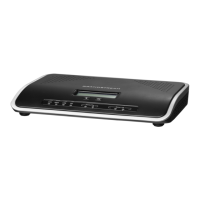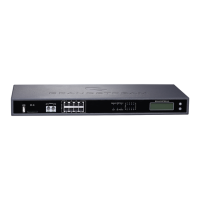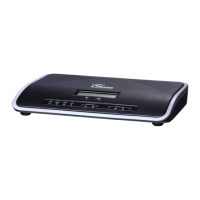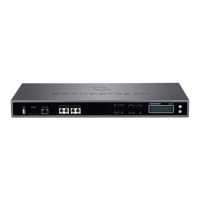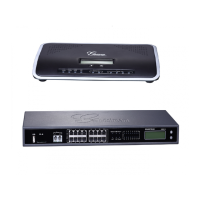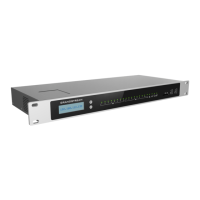GXE502X User Manual 11/2/2009
55
These can be used to specify the length of the string dialed. For example is the digit map is XXXXXXXXXX
(10 X’s) then this will basically match any 10 digit number dialed which is the way people dial within the USA;
now this rule may not be too practical because it is too general, instead the user may want to create something
like: ZXXZXXXXXX where the first and fourth digit of the string dialed match any number from 2 to 9. This
adjusts better to the reality of the North American numbering system.
We can also write the matching digits as a set of digits or a range. For example to match any digit from 2 to 9
we can also write [2-9] or we can specify all the digits as a set [2,3,4,5,6,7,8,9].
So in the example above we can write the general rule for the USA as: [2-9]XX[2-9]XXXXXX, which might be
easier to understand for some users.
We can also specify certain strings. For example we can say that 911 is a digit map. This way the GXE will
know the best way to route as soon as it sees an emergency call (911).
We also have the “,” (comma) and “.” (dot) operators. The comma introduces a 5 second delay while dialing
and the dot is the wildcard, so any digits dialed after the dot will just be sent out.
The important thing is to notice that we can decide to set a string size. As explained above we can input a fixed
number of Xs, Ys and Zs to indicate the GXE how long the string dialed should be. We can also replace any of
the XYZs with a range of numbers like [2-9]. Following are some examples to illustrate what we just learned.
NXXNXXXXXX: Typical US call when using 10 digit dialing. This will match numbers like 617-555-
5555, 626-555-5555 or 972-555-555
[1-9]XX[1-9]XXXXXX: Same as above but this time we are specifying the range used. Again in this
case the GXE will be looking for 10 digits dialed that match this pattern in order to route the call.
911 or similar numbers: In most countries there will be some 3 digit numbers established for
emergencies or information services. The GXE will be looking for that string in particular so the user
has to actually dial those numbers in order to match the digit map.
1[2-9]XX[2-9]XXXXXX: Another typical USA dialing pattern, but in this case we have added a 1 at
the beginning since some users might be used to dial this way.
1800.: In this case there is a . (dot) right after the 1-800 area code. This means that the GXE will not
care about which or how many numbers are dialed after the 1800. The (.) is used as a wildcard since it
will match any digits without a pre set length.
1866,XXXXXXX: In this case there will be a 5 second pause introduced after the 1866.
6XNZ[1-5],123456: This one is a little complicated, but it illustrates how we can basically match any
string of numbers as we please. The first digit is 6, second digit is any digit from 0 to 9, third digit is any
digit from 1 to 9, fourth digit is any digit from 2 to 9, fifth digit is any digit from 1 to 5, "," will cause 5
second delay, followed by number "123456". This will also be an 11 digit string.
Additionally we can also use the * (star) or # (pound) signs if necessary just like any other digits.
Conditions
A user can add up to 5 conditions to each digit map. These conditions are Boolean expressions which mean they
are either true or false. Typically conditions will be set mostly by advanced users as the digit maps don’t
necessarily require them to function.
The expressions that go in the condition field consist of variables, conditional operators and values connected
with logical operators. The logical operators are as follows:
&&: Logical AND
||: Logical OR
!: Logical NOT
